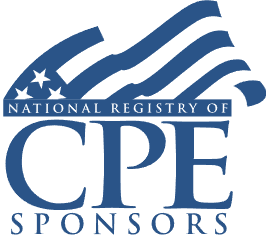PFIC Identification and Reporting: Look-Through Attribution Rules, QEF and Mark-to-Market Elections, Form 8621

Course Details
- smart_display Format
On-Demand
- signal_cellular_alt Difficulty Level
Intermediate
- work Practice Area
Corporate Tax
- event Date
Wednesday, November 6, 2019
- schedule Time
1:00 PM E.T.
- timer Program Length
110 minutes
-
BARBRI is a NASBA CPE sponsor and this 110-minute webinar is accredited for 2.0 CPE credits.
-
BARBRI is an IRS-approved continuing education provider offering certified courses for Enrolled Agents (EA) and Tax Return Preparers (RTRP).
-
Live Online
On Demand
This course will furnish tax advisers with a thorough and practical guide to the reporting of investments in a passive foreign investment company (PFIC) on IRS Form 8621. The panel will identify those investments that require PFIC reporting, focusing specifically on the look-through rules that apply in determining the PFIC status of a foreign corporation. The webinar will outline the various elections available to taxpayers holding interests in PFICs, discuss the tax implications of those elections, and provide an example of a completed Form 8621 to illustrate reporting requirements.
Description
PFIC tax provisions are among the most complicated rules affecting both individual and corporate taxpayers in the U.S. The PFIC provisions adversely impact U.S. taxpayers, particularly affecting those with portfolio investments in non-U.S. corporations (often as a result of living or doing business outside the U.S.). More challenging can be the lack of support for U.S. tax reporting from these entities. Unlike U.S.-based mutual funds, foreign investment entities and funds typically have no obligation to furnish U.S. persons with tax reporting information. As a result, the responsibility falls entirely on the shareholder to determine ownership share and tax obligations arising therefrom.
The thresholds for determining whether an investment qualifies as ownership of a PFIC can be difficult to apply in practice, given the "look-through" rules applicable to foreign corporations. Section 1297(c) sets a 25% ownership threshold in another foreign corporation for purposes of determining whether the PFIC rule applies. Additionally, Section 1298(b)(7) applies the look-through rule to foreign corporations owning 25% or more of the stock of a U.S. domestic corporation in determining whether the foreign corporation is a PFIC.
Listen as our panel of expert advisers provides a thorough guide to reporting PFIC ownership shares, including determination of PFIC reporting requirements, tax calculations required by the PFIC reporting regime, and elections available to opt-out of default tax treatment under the PFIC rules.
Outline
- Overview of the PFIC rules
- Identifying PFIC investments subject to filing requirements
- Section 1297 look-through rule
- Section 1298(b)(7) look-through for foreign corporations owning first-tier domestic corporation shares
- Filing thresholds and key exclusions
- Elections available to taxpayers
- Mark-to-market
- QEF election
- Completing Form 8621
Benefits
The panel will review these and other vital issues:
- Identifying assets that constitute PFIC holdings
- Comparing tax results of the PFIC default rules, mark-to-market, and QEF regimes
- Identifying tax impact of QEF election in a year after the acquisition of the PFIC asset
- Where to report QEF and purging elections on Form 8621
NASBA Details
Learning Objectives
After completing this course, you will be able to:
- Determine scenarios in which to make a QEF election
- Identify the elections and calculations necessary to make a QEF election in a year after asset acquisition
- Discern whether a mark-to-market election would be more tax efficient than a QEF election
- Recognize the filing requirements on Form 8621 for making the initial QEF election and subsequent years purging elections
- Field of Study: Taxes
- Level of Knowledge: Intermediate
- Advance Preparation: None
- Teaching Method: Seminar/Lecture
- Delivery Method: Group-Internet (via computer)
- Attendance Monitoring Method: Attendance is monitored electronically via a participant's PIN and through a series of attendance verification prompts displayed throughout the program
- Prerequisite: Three years+ business or public firm experience at mid-level within the organization, preparing complex tax forms and schedules; supervisory authority over other preparers/accountants. Knowledge and understanding of passive foreign investment company (PFIC) rules, including taxation of PFICs and filing requirements; familiarity with IRS Form 8621.

Strafford Publications, Inc. is registered with the National Association of State Boards of Accountancy (NASBA) as a sponsor of continuing professional education on the National Registry of CPE Sponsors. State boards of Accountancy have final authority on the acceptance of individual courses for CPE Credits. Complaints regarding registered sponsons may be submitted to NASBA through its website: www.nasbaregistry.org.

Strafford is an IRS-approved continuing education provider offering certified courses for Enrolled Agents (EA) and Tax Return Preparers (RTRP).
Unlimited access to premium CLE courses:
- Annual access
- Available live and on-demand
- Best for attorneys and legal professionals
Unlimited access to premium CPE courses.:
- Annual access
- Available live and on-demand
- Best for CPAs and tax professionals
Unlimited access to premium CLE, CPE, Professional Skills and Practice-Ready courses.:
- Annual access
- Available live and on-demand
- Best for legal, accounting, and tax professionals
Unlimited access to Professional Skills and Practice-Ready courses:
- Annual access
- Available on-demand
- Best for new attorneys
Related Courses

Calculating Foreign Sourced Dividends-Received Deduction After Tax Reform
Available On-Demand

Depreciation and Expensing: New Rules and Limits Under Current Tax Law
Available On-Demand